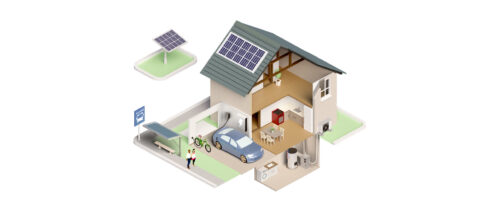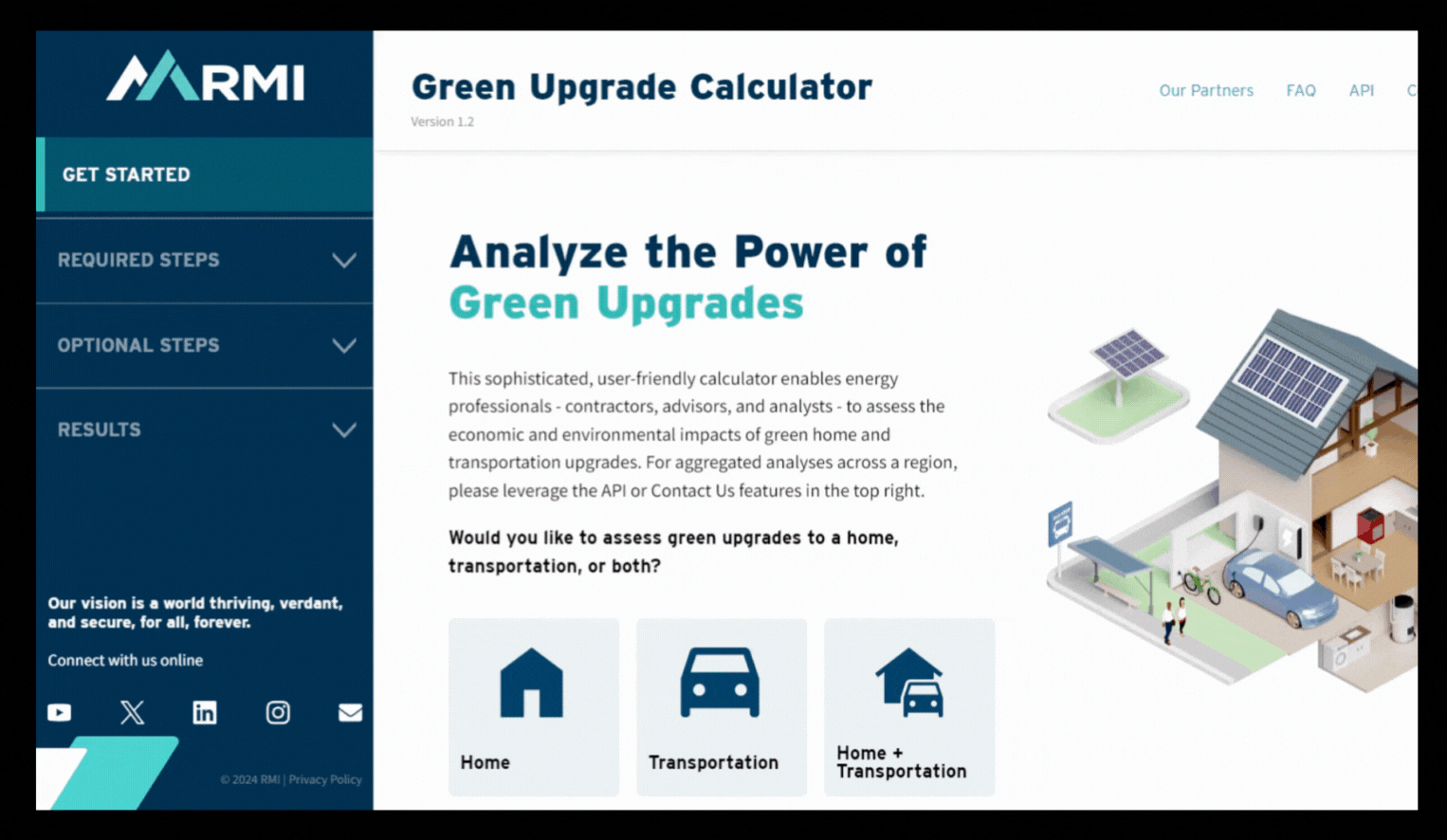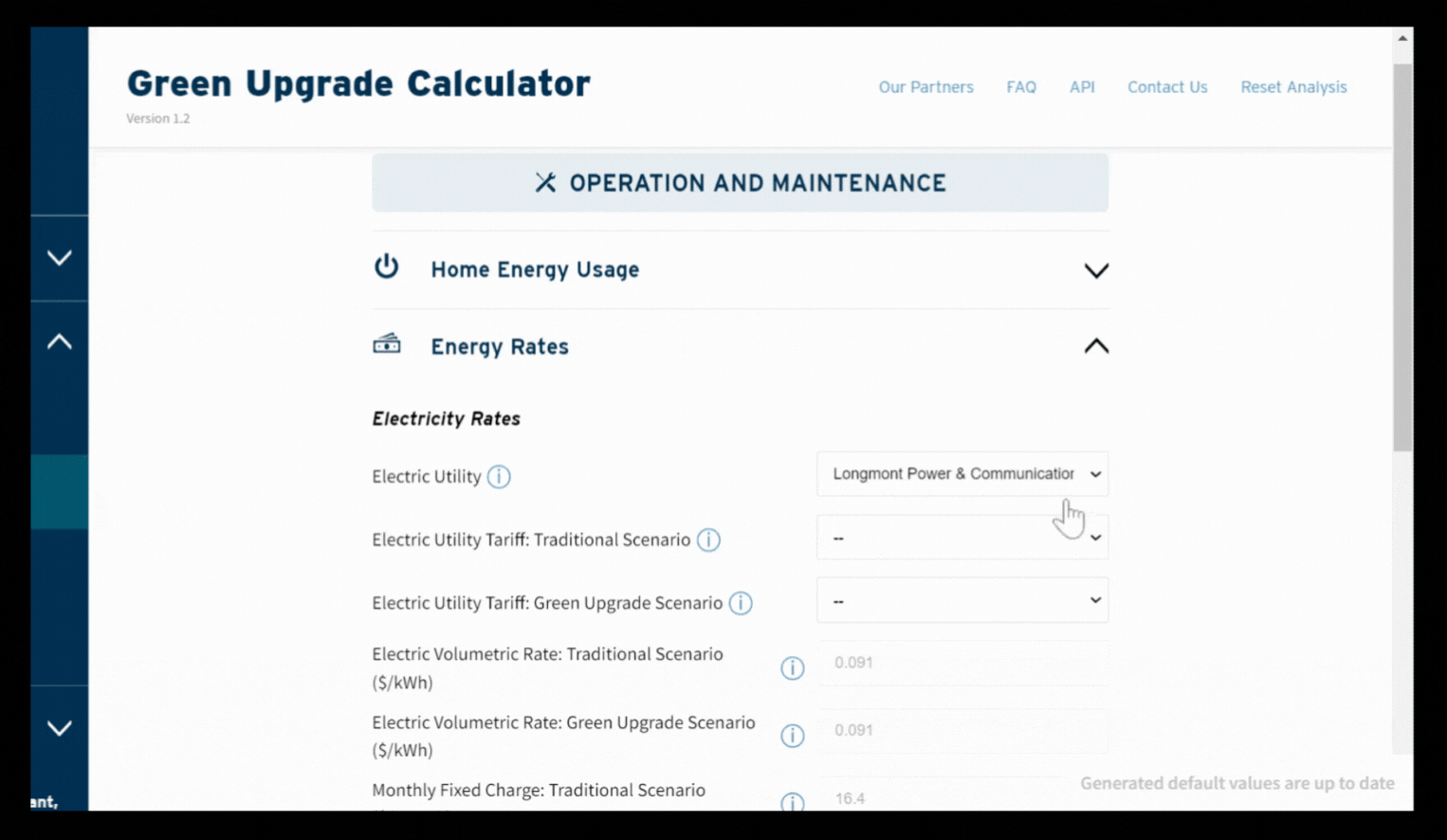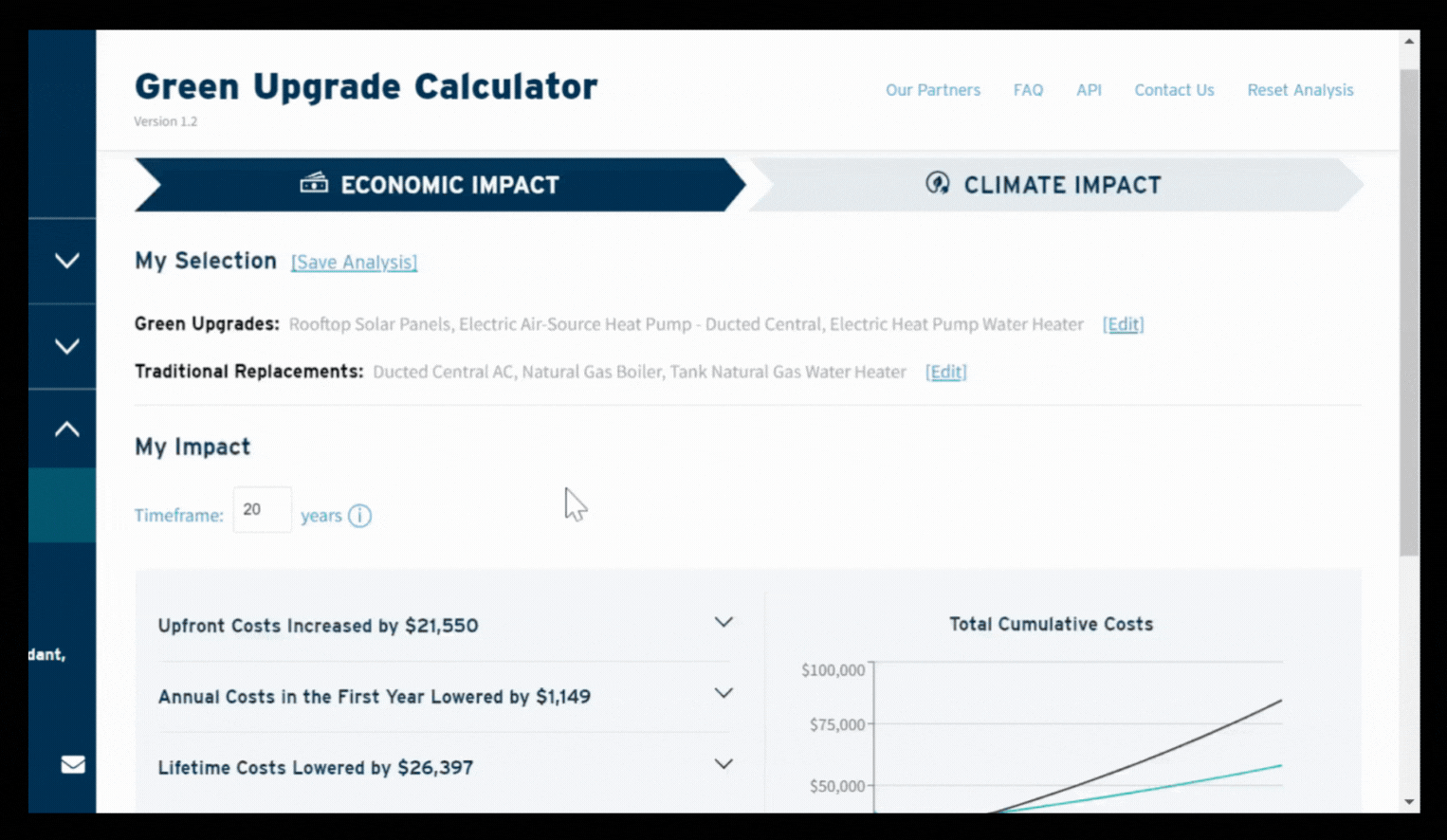
At Last, a Residential Modeling Tool for Energy Professionals
Introducing the Green Upgrade Calculator
The Inflation Reduction Act has supercharged interest in and funding for many home and vehicle electrification and energy efficiency upgrades. However, energy professionals — contractors, advisors, and analysts — have struggled to provide a better answer than “it depends” to very common homeowner questions like “how cost-effective is this specific home or vehicle upgrade?” and “which upgrade reduces the most carbon pollution?” for a particular resident or location.
Until now. Today, RMI is proud to launch the Green Upgrade Calculator. This free, sophisticated, and user-friendly modeling software enables energy pros to swiftly analyze the lifetime cost and environmental benefits of common residential decarbonization solutions like rooftop solar, battery storage, weatherization, heat pumps, heat pump water heaters, induction cooktops, and electric vehicles and bikes.
The Calculator was developed by RMI with seven partner organizations — Abode Energy Management, Arcadia, Electrification Coalition, New Buildings Institute, Northeast Energy Efficiency Partnerships, Pacific Northwest National Laboratory, and Solar United Neighbors.
Below, we outline how the Calculator can help three key types of energy professionals advance their work on single-family homes:
- Home contractors can customize system details and convey operating and lifetime cost benefits for clients.
- Home energy advisors can provide tailored suggestions for the residents they advise based on their economic or climate motivations.
- Residential decarbonization analysts can perform analyses across a region to understand the potential impacts of green policies on residents.

An economic modeling tool for home contractors
To help meet the growing consumer demand for home electrification upgrades, the Calculator provides home contractors with a dynamic tool, supplementing a growing number of electrification contractor training resources from the Pacific Northwest National Laboratory, to design cost-effective system combinations, analyze bill impacts, and perform market research.
Contractors can mix-and-match technologies (e.g., an air-source heat pump plus insulation or solar) and design parameters (e.g., air-source heat pump specifications from Northeast Energy Efficiency Partnerships’ Heat Pump List and the temperature hybrid systems switch to gas backup) to see and communicate what will be most cost-effective for their clients. As Jamey Stephens, general manager at Evergreen Home Heating and Energy, a home energy contractor serving the Puget Sound area, notes, “We’re eager to use this tool to assess and convey the cost and carbon benefits of the home upgrades our clients are interested in, whether that’s full home electrification or a hybrid heat pump.”

Contractors can also more confidently assess how a green upgrade will impact a client’s utility bills by leveraging the tool’s hourly energy model and real-time electric utility rates through Arcadia’s Signal tariff database, including time-of-use rates. As Thomas Tutor, Residential Sales Manager at ReVision Energy, a home decarbonization contractor serving New England, notes, “RMI has created an incredibly powerful and detailed, while also accessible, tool for contractors just getting into the heat pump and efficient home upgrade space to confidently estimate the energy bill and carbon savings of stacking different electrification, efficiency, and solar upgrades for their clients.”
RMI has created an incredibly powerful and detailed, while also accessible, tool for contractors just getting into the heat pump and efficient home upgrade space to confidently estimate the energy bill and carbon savings of stacking different electrification, efficiency, and solar upgrades for their clients.
Home contractors looking to expand their market share can leverage this tool to identify household types and locations where green upgrades create the most savings (e.g., homes that use electric resistance and/or delivered fuel in a specific utility territory). Hal Smith, CEO of Halco Energy, a home contractor serving Upstate New York, says, “As we grow our electrification and solar work, we’re excited to use this tool to proactively identify the types of system combinations and home types that will financially benefit the most.”
A technical resource for home energy advisors to guide clients
Given that the new DOE $8.8 billion Home Energy Rebate Programs are expected to drive significantly more homeowner interest in electrification, the Calculator provides home energy technical advisors in those programs with an analytical tool to deliver tailored solutions that clients are typically seeking, including comparing the economic impact of different quotes and analyzing climate impacts of different upgrades.

Advisors can enter quote information a client receives from different contractors, including the upfront costs and system specifications. This enables them to compare the lifecycle costs and benefits associated with each proposal to help choose the best option. According to Travis Estes, COO at Abode Energy Management, “This tool provides valuable insights for advisors into the lifetime cost savings between home solutions as they assist residents decarbonizing their homes.”
Unlike other free home energy analysis tools, RMI’s Calculator incorporates time-of-day electric grid greenhouse gas emissions modeling by state. This enables home advisors to more accurately compare the emission impacts between different upgrade options, such as rooftop solar versus an electric vehicle. “We’re excited to use this tool advising our clients on the cost and climate benefits of different upgrades as part of our free National Solar Help Desk,” says Corey Ramsden, VP of Go Solar Programs at Solar United Neighbors
A software for energy analysts to improve program and policy design
Residential energy analysts, such as advisors to governmental and utility residential decarbonization programs and policies, can also leverage the Calculator to compare the locally specific economic and climate impacts of those programs or policies. The Application Programming Interface, or API, enables users to efficiently run multiple scenarios and apply them to local single-family inventories to generate results at the national, regional, or local level. Given the inherent complexities of these analyses, we recommend contacting RMI experts to learn about support opportunities.
For instance, those looking to understand where green upgrades have the biggest economic or climate impact can generate national results by running scenarios based on state-level building inventories. As an example, our team leveraged the API to generate the national results below for which residential upgrades may have the highest lifetime cost savings.
In addition, energy analysts can assess localized impacts on residents from a proposed program or policy, such as a zero-emissions equipment standard or clean heat standard, by leveraging the API to run scenarios corresponding to the location’s residential building inventory. For example, our team leveraged the API across all single-family homes in New York to provide a snapshot of electric heat pump water heater (HPWH) energy bill savings to inform state HPWH policy. We found switching to a heat pump water heater would save the average New York homeowner $268 per year and statewide could save homeowners over $741 million.
Check it out today!
The residential green upgrade movement is taking off — billions of dollars are being invested in heat pumps, rooftop solar, induction cooktops, EVs, and E-bikes, resulting in all-time high sales and growing consumer interest. If you are an energy professional ready to capitalize on this moment, now is the perfect time to check out the Green Upgrade Calculator to see how you can leverage it in your work.